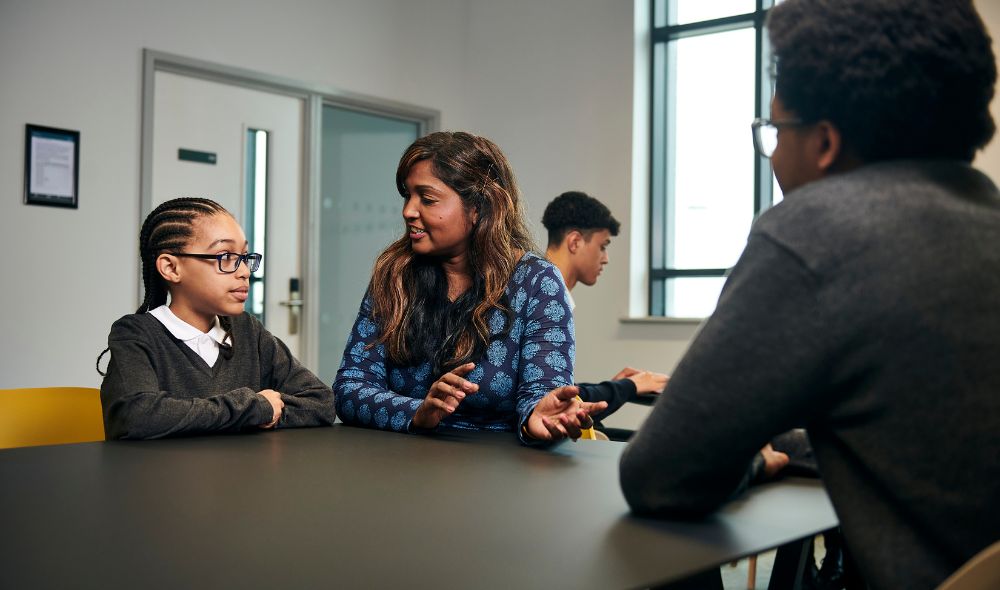What is SEN support in schools?

Written by: Ray Boxall, Head of SEN at Academy21 and King’s InterHigh
There are over 1.6 million pupils in England with Special Educational Needs (SEN), and this proportion of students has been growing significantly in schools since 2016. Much of this upward trajectory is due to increased awareness and understanding of SEN symptoms, leading to quicker and more accurate diagnoses. While this is positive—prompting parents to secure an Education, Health, and Care Plan (EHCP) to ensure their child’s needs are met—it also places additional demands on schools.
The rise of SEN awareness doesn’t necessarily mean that the system is effective at identifying SEN and delivering the right solutions. Parents and their children face long waits to be officially diagnosed and access EHCPs. Plus, there is no universally accessible support afterwards, which means that it is challenging to assert whether each child is receiving the appropriate treatment.
What is an Education, Health, and Care Plan (EHCP)?
An Education, Health, and Care Plan (EHCP) is a legal document in the UK designed to support children and young people up to the age of 25 who have special educational needs (SEN). Initially, it involves a thorough assessment of the child’s or young person’s specific educational, health, and social care needs, conducted by various professionals and reviewed annually to ensure its effectiveness.
Based on their unique needs, the EHCP outlines the support required from different institutions to ensure the individual can overcome obstacles and achieve the best outcomes in both their personal and professional lives. This additional support may come from the school, which may provide specialised services like one-on-one teaching or the use of assistive technology. In addition, children or young people with SEN may require healthcare services such as speech and language therapy, occupational therapy, physiotherapy, or mental health support, as well as social care to assist with daily activities.
Some parents and schools alike are turning to online teaching to ensure these children can balance their new commitments and ensure all their needs are being met. Among other benefits, online teaching provides students with higher flexibility to learn at a time and place that works best for them, so they can balance their personal and medical commitments without missing out or adding more stress to their routines.
Trends in Education, Health, and Care Plans (EHCPs)
In state-funded Alternative Provision (AP) schools, 24.2% of students have EHCPs, compared to just 4.8% in mainstream settings. Additionally, 58.1% of students in AP schools require SEN support, in stark contrast to the 13.6% in mainstream environments. Based on these statistics from the UK government, the demand for SEN support is clear and pressing, especially in alternative settings where the complexity of needs is often higher.
For teaching professionals, supporting a diverse range of diagnoses can be daunting, especially when students have co-occurring needs. However, this challenge can be managed effectively with a practical, thoughtful approach as well as adequate support and training. At Academy21, we’ve prioritised this support and training and adapted five key strategies from the Education Endowment Foundation’s guidance on Special Educational Needs in Mainstream Schools to ensure that our approach is both inclusive and effective.

What is SEN support in schools?
The level and breadth of SEN support services available can vary from school to school. In the UK, most schools are required to provide some level of SEN support as part of their obligation under the Special Educational Needs and Disability (SEND) Code of Practice. However, as noted in the latest Ofsted Annual Report, schools are facing challenges in implementing SEN support effectively.
Due to the increasing number of children and young people with SEN, many schools are experiencing a lack of teaching resources, specialised personnel, or necessary funds to invest in additional services. Furthermore, there may be limited alternative provision solutions available in their area, making it more challenging to access provision and academic and pastoral support via third-party providers.
What is an example of SEN support?
Examples of SEN support in schools include mentoring, workshops, or SEN-friendly learning tools like visual aids and adaptive technology. The types of SEN support schools and alternative provisions offer vary depending on students’ needs and available resources.
As the leading online alternative provision specialist, Academy21 offers schools the capacity and accessibility to enrol students as and when needed so they can continue their education swiftly, regardless of their needs. Our services include personalised learning plans, mentoring, academic and wellbeing support courses, and access to dedicated SEN teams.
We also leverage advanced tools such as VR for immersive learning experiences, bespoke platforms, and assistive tech to motivate students to learn and participate in class, thereby improving their engagement and closing learning gaps more effectively.
Generally, however, there is a lot that can be done to improve SEN support in brick-and-mortar schools. Our five key strategies are adapted from the Education Endowment Foundation guidance report on Special Educational Needs in Mainstream Schools.

Five key strategies to enhance SEN support in schools
1. Adapt to individual needs
It’s crucial to tailor educational approaches to meet the specific needs of each student. This can be done through the development of Individual Education Plans (IEPs) with specific goals and strategies tailored to each student’s needs, such as personalised learning paths and homework based on weaknesses and strengths. Grouping students according to their learning capabilities and level of understanding of specific subjects can also help increase confidence and encourage collaboration.
In the online education space, it is easier to adapt education methods and tools to students’ unique needs. There are various ways to praise and encourage students for their achievements, greater flexibility to group students according to age and stage (therefore enabling teachers to better support students’ requirements), and availability of lesson recordings and resources that can be accessed at any time.
2. Dual-coded instructions
Providing instructions in clear, concrete, and manageable chunks helps students process information better. For example, using graphics and multimedia to complement verbal instructions makes complex information more accessible and easier to digest. Step-by-step guides or comprehensive to-do lists can also help students manage their tasks and alleviate the pressure they may be feeling from their current school environment. Academy21 also offers helpful Student Support Hub video guides to supplement our live teaching, helping students to develop their executive functioning skills.
3. Well-structured models
Developing well-structured models and scaffolding through mnemonic aids, graphic or knowledge organisers, allows students to visualise what success looks like and supports them in achieving it. This approach builds confidence and competence, which is essential in scenarios where students are out of mainstream school and need a phased reintegration plan. Continuously monitoring student performance can also help teachers be more adaptive to their needs and leverage different teaching methods to incrementally build their skills. At Academy21, we do this via online classroom tools such as polls and low-stakes quizzes.
4. Promote an inclusive environment
Adopt teaching strategies that promote an inclusive environment based on dignity and mutual respect. This includes recognising and rewarding effort and progress, and ensuring that all teaching materials and curricula, as well as any technology tools used, reflect diverse perspectives and are easily accessible to all students. For example, using dyslexia-friendly fonts can help students reduce reading difficulties, and offering different ways to communicate with teachers and peers (such as private discussion pods) can encourage students to participate more often.
5. Varied methods of recording learning
Offering different methods for recording learning reduces the reliance on writing and ensures that all students can learn in a way that suits them best. For example, at Academy21, all lessons are recorded and can be watched at any point during the day. This means that students have the flexibility to attend personal commitments or build their daily schedule in a way that benefits them best, without ever having to worry about missing out on their learning.
Academy21’s unique approach to SEN support
At Academy21, our online setting, accessible platform, and commitment to quality first inclusive teaching allow us to excel in two key areas:
- Flexibility: Our online environment offers a level of flexibility that is difficult to achieve in traditional brick-and-mortar settings. Whether through our varied curriculum options, the choice between live and recorded lessons, or the multiple ways in which students can communicate and contribute, we provide the support and encouragement needed to engage learners effectively.
- Inclusivity: Our learning platform is designed with inclusivity in mind. From accessibility features in our classroom environment and resources to study support tools and our Enhanced Services programme, we supplement students’ core curriculum to ensure that all learners feel included and supported.
Our specific online pedagogy at Academy21 creates a welcoming environment that not only reduces anxiety but also removes barriers for SEN learners. By offering a high-quality, DfE-accredited curriculum, expert SEN support, flexible commissioning options, and scalable capacity, we can support schools and local authorities in meeting the growing demand for SEN support.
Reach out to our team below if you would like to learn more about Academy21 or enrol your students.
Written by
Academy21
Posted on
04/09/2024
Updated on
06/11/2025
Topic
Student successPost type
Blog


